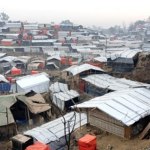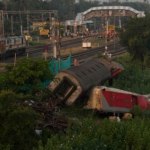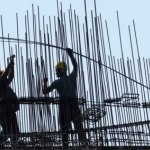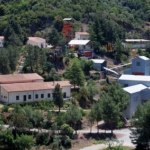07 June 2023
Earth is now considered to be in a "danger zone," a new study says.
An international group of scientists called Earth Commission did the study. It appeared in the publication Nature.
The researchers report that conditions on Earth have pushed past seven of eight safety limits established by science. The experts say the planet is very sick and all life, humans included, face extreme risks as a result.

FILE - A swan stands between dumped plastic bottles and waste at the Danube river in Belgrade, Serbia, on April 18, 2022. (AP Photo/Darko Vojinovic)
The study examines climate, air pollution, fertilizer pollution in water, groundwater supplies, fresh surface water, the unbuilt natural environment and the larger human-built environment. The research shows each of those areas have passed into dangerous conditions worldwide. Only air pollution is within the identified safety zone, the scientists report.
However, the report notes that air pollution is dangerous at local levels.
The study found problem "hot spot" areas throughout the world, much of it from climate change. About two-thirds of Earth does not meet safe levels for freshwater supply, scientists said.
Joyeeta Gupta is the Earth Commission co-chair and professor of environment at the University of Amsterdam. She told reporters that if planet Earth went to a medical exam, "our doctor would say that the Earth is really quite sick right now and it ... is also affecting the people living on Earth."
But the planet can recover if people make changes, the researchers report. Such reforms would include reducing the use of coal, oil and natural gas and improving treatment of land and water, the scientists said.
But "we are moving in the wrong direction on basically all of these," said study lead author Johan Rockstrom, from the Potsdam Institute for Climate Impact Research in Germany.
The team of about 40 scientists created measurable boundaries for each environmental category. They decided the level where it is safe for the planet. The point at which it becomes harmful for groups of people, the researchers called a justice issue.
Rockstrom said he thinks of those points as setting up "a safety fence'' outside of which the risks become higher, but not necessarily disastrous.
Rockstrom and other scientists have attempted in the past this type of measuring of Earth's connected ecosystems. The big difference in this attempt is that scientists also looked at local and area levels and added the idea of justice.
The justice part includes fairness between young and old generations, different nations and even different species. Frequently, it applies to conditions that harm people more than the planet.
An example of that is climate change.
The report uses the same boundary of 1.5 degrees Celsius of warming that international leaders agreed upon in the 2015 Paris climate agreement. The world has so far warmed about 1.1 degrees Celsius so it has not crossed that safety fence, Rockstrom and Gupta said. But that does not mean people are not being hurt.
"What we are trying to show through our paper is that even at 1 degree Centigrade there is a huge amount of damage taking place," Gupta said.
The planetary safety boundary of 1.5 degrees has not been reached. But the "just" boundary of 1 degree where people are hurt has been.
Stanford environmental studies head Chris Field was not part of the research. He said he would want even more strict boundaries.
"Sustainability and justice are inseparable," he said.
I'm Dan Novak.
Dan Novak adapted this story for VOA Learning English based on reporting by The Associated Press.
____
Words in This Story
zone — n. an area that is different from other areas in a particular way
hot spot — n. a place where there is much danger or fighting
category — n. a group of people or things that are similar in some way
sustainability — n. able to be used without being completely used up or destroyed











